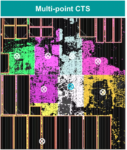You are currently viewing SemiWiki as a guest which gives you limited access to the site. To view blog comments and experience other SemiWiki features you must be a registered member. Registration is fast, simple, and absolutely free so please,
join our community today!
WP_Term Object
(
[term_id] => 159
[name] => Siemens EDA
[slug] => siemens-eda
[term_group] => 0
[term_taxonomy_id] => 159
[taxonomy] => category
[description] =>
[parent] => 157
[count] => 813
[filter] => raw
[cat_ID] => 159
[category_count] => 813
[category_description] =>
[cat_name] => Siemens EDA
[category_nicename] => siemens-eda
[category_parent] => 157
[is_post] =>
)

WP_Term Object
(
[term_id] => 159
[name] => Siemens EDA
[slug] => siemens-eda
[term_group] => 0
[term_taxonomy_id] => 159
[taxonomy] => category
[description] =>
[parent] => 157
[count] => 813
[filter] => raw
[cat_ID] => 159
[category_count] => 813
[category_description] =>
[cat_name] => Siemens EDA
[category_nicename] => siemens-eda
[category_parent] => 157
[is_post] =>
)
If you have anything to do with the semiconductor industry, you already know that one of the hottest areas for both manufacturing and EDA are systems designed with advanced packaging, basically putting more than one die (aka chiplets) in the same package.
When 3D packaging was first introduced, there were not really any effective… Read More
You are probably familiar with the acronym PPA, which stands for Power/Performance/Area. Sometimes it is PPAC, where C is for cost, since there is more to cost than just area. For example, did you know that adding an additional metal layer to a chip dramatically increases the cost, sometimes by millions of dollars? It requires a … Read More
Custom and Analog-Mixed Signal (AMS) IC design are used when the highest performance is required, and using digital standard cells just won’t meet the requirements. Manually sizing schematics, doing IC layout, extracting parasitics, then measuring the performance only to go back and continue iterating is a long, tedious… Read More
Advanced process nodes create challenges for EDA both in handling ever larger designs and increasing design process complexity.
Shift-left design methodologies for design cycle time compression are one response to this. And this has also forced some rethinking about how to build and optimize design tools and flows.
SemiWiki… Read More
In the world of electronic systems design, complexity has always been a major challenge. As technology advances and demands for more efficient and powerful electronic devices grow, engineers face increasingly intricate design requirements. These complexities often lead to longer design cycles, increased costs, … Read More
Siemens EDA’s next move in its Calibre shift left strategy is the addition of correct-by-construction IC layout optimization for the most critical emerging physical design challenges. Calibre’s new DesignEnhancer product supports both custom and digital ICs and is already in use by several leading IC design companies. It … Read More
The impact of AI seems to be everywhere. Products are smarter, doing more of what used to be done by the humans. Complex tasks can be completed quicker and with greater accuracy and failures can now be predicted more reliably and repaired before they even occur. The AI technologies used to make all this happen and how those technologies… Read More
Next generation electronic systems require an engineering approach incorporating a digital twin methodology for early verification with digital prototypes. Over the course of a design project, the digital twin model evolves to allow more complex interactions including analysis, simulations and validations earlier… Read More
The transformation of the vertically integrated electronics value chain to a disaggregated supply chain has brought tremendous value to the electronics industry and benefits to the consumers. This transformation has driven the various players to become highly specialized in order to support the market trends and demands … Read More
At the DesignCon 2023 event this year there was a presentation by Micron all about DDR5 design challenges like the need for a Decision Feedback Equalizer (DFE) inside the DRAM. Siemens EDA and Micron teamed up to write a detailed 25 page white paper on the topic, and I was able to glean the top points for this much shorter blog. The DDR5… Read More











